| Iowa's 4th congressional district | |||
|---|---|---|---|
Interactive map of district boundaries since January 3, 2023 | |||
| Representative |
| ||
| Distribution |
| ||
| Population (2022) | 794,584 | ||
| Median household income | $68,755[1] | ||
| Ethnicity |
| ||
| Cook PVI | R+16[2] | ||
Iowa's 4th congressional district is a congressional district in the U.S. state of Iowa that covers the western border of the state, including Sioux City and Council Bluffs. Up north, it extends eastwards into Ames, Boone, Fort Dodge, and Marshalltown. It has been represented by Republican Randy Feenstra since 2021, who defeated longtime incumbent Steve King in 2020. With a Cook Partisan Voting Index rating of R+16, it is the most Republican district in Iowa, a state with an all-Republican congressional delegation.[2]
History
Since the 1880s, there have been major changes in the location or nature of Iowa's 4th Congressional District. From 1886 until 1941, the district was made up of largely rural counties in northeastern Iowa, including the easternmost five counties in the northernmost two rows[3] (and, during the 1930s, Buchanan and Delaware counties from the third row).[4] During that era, the district included areas from Mason City east to the Mississippi River.
In 1941, Iowa's 5th Congressional District (made up of rural counties in southern Iowa) was renumbered as Iowa's 4th Congressional District, and counties in the old 4th District were placed in the 3rd District and the 2nd District.[5] (In 1942, 4th District incumbent, Henry O. Talle, would defeat the 2nd District incumbent William S. Jacobsen in the new 2nd Congressional District). From 1941 until 1960 the 4th Congressional District included the central five counties of each of the two southernmost tiers, plus four counties between Des Moines and Iowa City (Mahaska, Keokuk, Jasper and Poweshiek).[5] 5th District incumbent Republican U.S. Representative Karl M. LeCompte was reelected in the reconfigured 4th District in 1942, and was reelected in the next seven races. In 1958, when LeCompte did not run for reelection, Democrat Steven V. Carter defeated Republican John Kyl. A recurrence of cancer would claim Carter's life before the end of his only term, and Kyl won the special election and next general election. In 1961 the 4th Congressional District was expanded to include five central Iowa counties - Warren, Marion, Marshall, Tama and Benton[6] - but retained its rural character. Kyl held this seat until he was swept out in the massive Democratic landslide of 1964. However, he regained his old seat in 1966, and was reelected two more times.
The rural character of the district was changed when most of its territory was merged with the Des Moines-based 5th District of Democratic incumbent Neal Smith after the 1970 census. Polk County (home to Des Moines and most of its suburbs) was added, while most of the rural counties were taken out.[7] Smith defeated Kyl in the 1972 congressional election. The district became even less rural in 1981, when Story County (home of Ames) was added, and other rural counties were taken out.[8] The district was significantly altered after the 1990 census, when it was reconfigured to take in the southwest quadrant of the state from Des Moines to Council Bluffs. Smith was reelected in 1992, but defeated in 1994 by Republican Greg Ganske.
The 2001 remap made the 4th district a north-central Iowa district. It could not be said to be the successor of any of the previous districts. It was a primarily rural district, though it included Ames and Mason City. It did not include any of the state's nine largest cities, and only four of the twenty largest Iowa cities.[9] The plan went into effect in 2003 for the 108th U.S. Congress.[10] The 5th's incumbent congressman, Tom Latham, had his home in Alexander drawn into the 4th, and was elected from this district five times.
For the 2012 elections, the Iowa Legislature passed a plan that went into effect in 2013 for the 113th U.S. Congress. The district now covers the northwest corner of the state, and essentially merged the northern half of the old 5th District with the western third of the old 4th. The new map placed Latham and 5th District incumbent Steve King in the same district. Although the new 4th was geographically more Latham's district, he opted to move to the redrawn 3rd District, leaving King to take the seat. The current 4th district is by far the most conservative in Iowa - it was the only one of the state's four districts to be won by Mitt Romney in 2012, and Donald Trump carried it by over 25 points in 2016. Additionally, King was the only Republican House member from Iowa during the 116th Congress, although he faced a close race in 2018 due to his long history of controversial comments.
In June 2020, Steve King was defeated in the Republican House primary by challenger Randy Feenstra.
Statewide races since 2000
Election results from statewide races:
| Office | Year | District result | Winner | |
|---|---|---|---|---|
| Statewide | Nationwide | |||
| President | 2000 | George W. Bush 49% – Al Gore 48% | Gore | Bush |
| 2004 | George W. Bush 51% – John Kerry 48% | Bush | ||
| 2008 | Barack Obama 53% – John McCain 45% | Obama | Obama | |
| 2012 | Mitt Romney 53% – Barack Obama 45% | |||
| 2016 | Donald Trump 61% – Hillary Clinton 34% | Trump | Trump | |
| 2020 | Donald Trump 63% – Joe Biden 36% | Biden | ||
List of members representing the district
Historical election results
| Year[11] | Winner | Second | Percentage | ||||
|---|---|---|---|---|---|---|---|
| Party affiliation | Candidate | Votes | Party affiliation | Candidate | Votes | ||
| 1920 | Republican | Gilbert N. Haugen | 53,083 | Democratic | Carl Evans | 18,104 | 75%–25% |
| 1922 | 32,586 | A. M. Schanke | 24,532 | 57%–43% | |||
| 1924 | 50,850 | J. M. Berry | 20,636 | 71%–29% | |||
| 1926 | 30,611 | Frank E. Howard | 20,076 | 60%–40% | |||
| 1928 | 50,488 | Erwin Larson | 31,968 | 61%–39% | |||
| 1930 | 29,224 | Wilbur L. Peck | 20,236 | 59%–41% | |||
| 1932 | Democratic | Fred Biermann | 62,598 | Republican | Gilbert N. Haugen | 42,207 | 59%–41% |
| 1934 | 49,504 | C. A. Benson | 43,794 | 52%–46% | |||
| 1936 | 56,308 | Henry O. Talle | 51,805 | 51%–47% | |||
| 1938 | Republican | Henry O. Talle | 48,640 | Democratic | Fred Biermann | 44,601 | 52%–48% |
| 1940 | 66,691 | Morgan J. McEnaney | 51,558 | 56%–44% | |||
| 1942 | Karl M. LeCompte | 52,258 | Thomas L. Curran | 28,745 | 65%–35% | ||
| 1944 | 59,658 | Harold J. Fleck | 49,098 | 55%–45% | |||
| 1946 | 43,753 | A. E. Augustine | 31,203 | 58%–42% | |||
| 1948 | 53,384 | Steven V. Carter | 49,894 | 52%–48% | |||
| 1950 | 51,168 | 38,649 | 57%–43% | ||||
| 1952 | 73,317 | Earl E. Glassburner | 44,900 | 62%–38% | |||
| 1954 | 49,608 | Herschel C. Loveless | 39,652 | 56%–44% | |||
| 1956 | 58,024 | Steven V. Carter | 56,406 | 51%–49% | |||
| 1958 | Democratic | Steven V. Carter | 42,479 | Republican | John Henry Kyl | 39,233 | 52%–48% |
| 1960 | Republican | John Henry Kyl | 65,016 | Democratic | C. Edwin Gilmour | 49,918 | 57%–43% |
| 1962 | 65,538 | Gene W. Glenn | 51,810 | 56%–44% | |||
| 1964 | Democratic | Bert Bandstra | 85,518 | Republican | John Henry Kyl | 73,898 | 54%–46% |
| 1966 | Republican | John Henry Kyl | 65,259 | Democratic | Bert Bandstra | 61,074 | 52%–48% |
| 1968 | 83,259 | 71,134 | 54%–46% | ||||
| 1970 | 59,396 | Roger Blobaum | 49,369 | 55%–45% | |||
| 1972 | Democratic | Neal Edward Smith | 123,431 | Republican | John Henry Kyl | 85,156 | 59%–41% |
| 1974 | 91,755 | Chuck Dick | 53,756 | 61%–35% | |||
| 1976 | 145,343 | Charles E. Minor | 65,013 | 69%–31% | |||
| 1978 | 88,526 | 48,308 | 65%–35% | ||||
| 1980 | 117,896 | Donald C. Young | 100,335 | 54%–36% | |||
| 1982 | 118,849 | Dave Readinger | 60,534 | 66%–34% | |||
| 1984 | 136,922 | Robert R. Lockard | 88,717 | 61%–39% | |||
| 1986 | 107,271 | 49,641 | 68%–32% | ||||
| 1988 | 157,065 | Paul Lunde | 62,056 | 72%–28% | |||
| 1990 | 127,812 | unopposed | 2,778 | 98%–2% | |||
| 1992 | 158,610 | Republican | Paul Lunde | 94,045 | 62%–37% | ||
| 1994 | Republican | Greg Ganske | 111,935 | Democratic | Neal Edward Smith | 98,824 | 53%–46% |
| 1996 | 133,419 | Connie McBurney | 119,790 | 52%–47% | |||
| 1998 | 129,942 | Jon Dvorak | 67,550 | 65%–34% | |||
| 2000 | 169,267 | Michael L. Huston | 101,112 | 61%–37% | |||
| 2002 | Tom Latham | 115,430 | John Norris | 90,784 | 55%–43% | ||
| 2004 | 181,294 | Paul W. Johnson | 116,121 | 61%–39% | |||
| 2006 | 120,512 | Selden Spencer | 89,994 | 57%–43% | |||
| 2008 | 184,529 | Becky Greenwald | 119,927 | 60%–39% | |||
| 2010 | 152,588 | Bill Maske | 74,300 | 64%–31% | |||
| 2012 | Steve King | 200,831 | Christie Vilsack | 168,323 | 53%–45% | ||
| 2014 | 169,141 | Jim Mowrer | 104,873 | 62%–38% | |||
| 2016 | 226,719 | Kim Weaver | 142,993 | 61%–39% | |||
| 2018 | 157,275 | J. D. Scholten | 146,737 | 50.3%–47.0% | |||
| 2020 | Randy Feenstra | 237,369 | 144,761 | 62.0%–37.8% | |||
2002
| Party | Candidate | Votes | % | |
|---|---|---|---|---|
| Republican | Tom Latham* | 115,430 | 54.77 | |
| Democratic | John Norris | 90,784 | 43.07 | |
| Libertarian | Terry L. Wilson | 2,952 | 1.40 | |
| Independent | Jim Hennager | 1,544 | 0.73 | |
| No party | Others | 64 | 0.03 | |
| Total votes | 210,774 | 100.00 | ||
| Turnout | ||||
| Republican hold | ||||
- Note: Jim Hennager ran on the Earth Federation Party platform on the ballot.
2004
| Party | Candidate | Votes | % | |
|---|---|---|---|---|
| Republican | Tom Latham* | 181,294 | 60.93 | |
| Democratic | Paul W. Johnson | 116,121 | 39.02 | |
| No party | Others | 151 | 0.05 | |
| Total votes | 297,566 | 100.00 | ||
| Turnout | ||||
| Republican hold | ||||
2006
| Party | Candidate | Votes | % | |
|---|---|---|---|---|
| Republican | Tom Latham* | 121,650 | 57.19 | |
| Democratic | Selden Spencer | 90,982 | 42.77 | |
| No party | Others | 98 | 0.05 | |
| Total votes | 212,730 | 100.00 | ||
| Turnout | ||||
| Republican hold | ||||
2008
| Party | Candidate | Votes | % | |
|---|---|---|---|---|
| Republican | Tom Latham* | 185,458 | 60.53 | |
| Democratic | Becky Greenwald | 120,746 | 39.41 | |
| No party | Others | 197 | 0.06 | |
| Total votes | 306,401 | 100.00 | ||
| Turnout | ||||
| Republican hold | ||||
2010
| Party | Candidate | Votes | % | |
|---|---|---|---|---|
| Republican | Tom Latham* | 152,588 | 65.62 | |
| Democratic | Bill Maske | 74,300 | 31.95 | |
| Independent | Dan Lensing | 5,499 | 2.37 | |
| No party | Others | 132 | 0.06 | |
| Total votes | 232,519 | 100.00 | ||
| Turnout | ||||
| Republican hold | ||||
2012
| Party | Candidate | Votes | % | |
|---|---|---|---|---|
| Republican | Steve King* | 200,063 | 51.69 | |
| Democratic | Christie Vilsack | 169,470 | 43.78 | |
| Independent | Martin James Monroe | 8,124 | 2.10 | |
| No party | Others | 226 | ||
| Total votes | 387,079 | 100.00 | ||
| Turnout | ||||
| Republican hold | ||||
2014
| Party | Candidate | Votes | % | |
|---|---|---|---|---|
| Republican | Steve King (incumbent) | 169,834 | 61.6 | |
| Democratic | Jim Mowrer | 105,504 | 38.3 | |
| Write-ins | 295 | 0.1 | ||
| Total votes | 275,633 | 100 | ||
| Republican hold | ||||
2016
| Party | Candidate | Votes | % | |
|---|---|---|---|---|
| Republican | Steve King (incumbent) | 226,719 | 61.23 | |
| Democratic | Kim Weaver | 142,993 | 38.62 | |
| Write-ins | 547 | 0.15 | ||
| Total votes | 370,259 | 100 | ||
| Republican hold | ||||
2018

| Party | Candidate | Votes | % | ±% | |
|---|---|---|---|---|---|
| Republican | Steve King (incumbent) | 157,275 | 50.33 | −10.9 | |
| Democratic | J. D. Scholten | 146,737 | 46.96 | +8.34 | |
| Libertarian | Charles Aldrich | 6,315 | 2.02 | +2.02 | |
| Independent | Edward Peterson | 1,940 | 0.62 | +0.62 | |
| Write-ins | 201 | 0.06 | −0.09 | ||
| Majority | 10,538 | 3.37 | |||
| Turnout | 312,468 | 100 | |||
| Republican hold | Swing | –19.24 | |||
2020

| Party | Candidate | Votes | % | |
|---|---|---|---|---|
| Republican | Randy Feenstra | 237,369 | 62.0 | |
| Democratic | J. D. Scholten | 144,761 | 37.8 | |
| Write-in | 892 | 0.2 | ||
| Total votes | 383,022 | 100.0 | ||
| Republican hold | ||||
See also
References
- General
- ↑ Center for New Media & Promotion (CNMP), US Census Bureau. "My Congressional District". www.census.gov.
- 1 2 "2022 Cook PVI: District Map and List". Cook Political Report. Retrieved January 10, 2023.
- ↑ "The Congressional Districts," Waterloo Courier, 1886-04-14 at 4; Iowa's Official Register (1930).
- ↑ Iowa's Official Register, 1933-34, at 6.
- 1 2 Iowa's Official Register, 1943-1944, at 15.
- ↑ "Another redrawing," Ames Daily Tribune, 1970-07-07 at 4.
- ↑ Iowa Official Register, 1973-74, at 30.
- ↑ Iowa Official Register, 1983-84, at 46.
- ↑ Iowa League of Cities,Population of Iowa Cities of 8,000 or More Archived 2008-05-11 at the Wayback Machine, accessed 2008-07-27.
- ↑ "2001 Iowa Redistricting Plan,". 2001. Archived from the original on October 16, 2006. Retrieved November 10, 2006.
- ↑ "Election Statistics,". 2005. Archived from the original on July 25, 2007.
- ↑ "Iowa General Election 2014". Iowa Secretary of State. November 4, 2014. Archived from the original on December 13, 2014. Retrieved December 19, 2014.
- ↑ "Iowa General Election 2014". Iowa Secretary of State. November 4, 2014. Archived from the original on December 24, 2016. Retrieved December 19, 2014.
- ↑ "Iowa General Election 2018". Iowa Secretary of State. Retrieved November 11, 2018.
- ↑ "General Election - 2020 Canvass Summary" (PDF). Iowa Secretary of State.
- Specific
- Martis, Kenneth C. (1989). The Historical Atlas of Political Parties in the United States Congress. New York: Macmillan Publishing Company.
- Martis, Kenneth C. (1982). The Historical Atlas of United States Congressional Districts. New York: Macmillan Publishing Company.
- Congressional Biographical Directory of the United States 1774–present
.svg.png.webp)
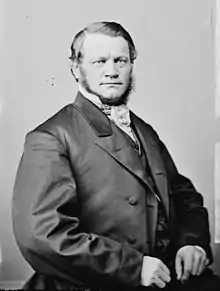


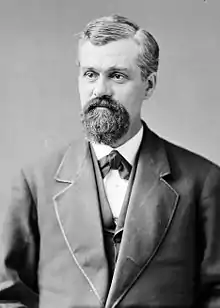
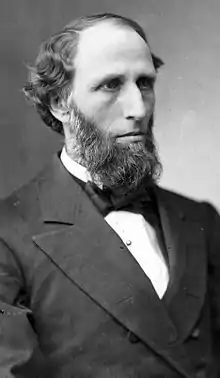
.jpg.webp)

.jpg.webp)
.jpg.webp)
.jpg.webp)
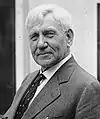
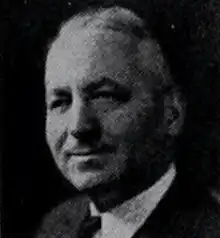
.jpg.webp)

.jpg.webp)

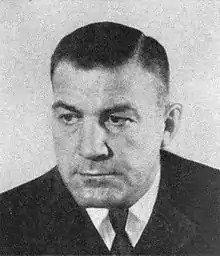

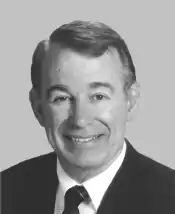



.tif.png.webp)
